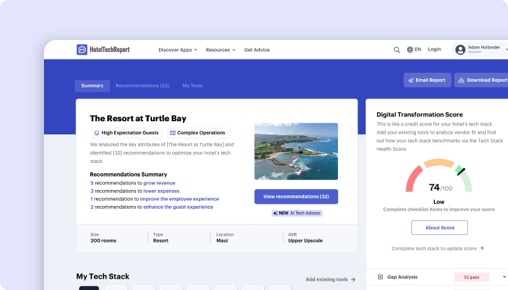Smile! That's what hotel staff are trained to do even when talking on the phone. When
you smile, you sound pleasant and interested. What are we to do in a world of texting
and chat?
As text messaging and chat become the communication channels of choice for
consumers, more hotels are adapting to the trend by inviting travelers to connect with
them by SMS, chat widget, or messaging app.
Consumers love messaging because it’s fast, easy, and convenient. A
Nielsen-Facebook survey found that 56 percent of people would rather message a
business than call customer service. And more than half of respondents said they are
more likely to shop with a business they can message directly.
For hotels, messaging represents a fundamental shift in how employees communicate
with guests—and with one another. To help with the transition, employees need tools
and guidelines. Above all, they need strong leadership.
Whether you’re a general manager, front office manager, or hands-on owner, here are
six steps to success in text messaging and chat.
1. Choose the Right Tools
Hotels have numerous options for messaging software, but not all are created equal.
Beware of “free” solutions, standalone apps, and chatbots that try to substitute human
hospitality with artificial intelligence.
Your messaging platform should be designed to serve the unique needs of hotels. And
it should integrate with your internal communication systems to facilitate collaboration
across shifts, departments, and properties.
If the messaging solution is overly complex, it will be avoided by staff. Keep it simple
and easy to learn so that staff love messaging as much as guests.
2. Assign Responsibilities
Who should oversee guest messaging? The front desk is the obvious choice. It’s open 24 hours, and staff are skilled in guest service and trained in reservations. Besides, with
fewer guests calling and dropping by these days, it’s often an underutilized resource.
But all departments play a role in internal messaging. As a manager, you must ensure
that employees understand and fulfill their responsibilities so that no guest request goes
unfilled and nothing falls through the cracks. Keep a close eye on communications,
looking for opportunities to increase efficiency and improve service.
3. Establish Guidelines
Messaging with guests is different from messaging with friends. Without proper
guidelines, employees risk coming across as unprofessional or impersonal, and guests
may end up frustrated or angry.
Set basic guidelines such as:
? Respond promptly. People expect a quick response to text and chat. Set a
maximum response time such as five minutes.
? Personalize. Introduce yourself when messaging a guest for the first time. If a
sender is unknown, politely ask for their name and room number.
? Be courteous. People are often on the go when messaging, so keep messages
brief but never abrupt. Always remember the pleases and thank-yous.
? Be professional. Adopt a friendly, conversational (but not casual) tone. Avoid
obscure emojis, jargon, slang, and anything else that may confuse or be
misinterpreted. Always check spelling before sending.
? Don’t use texting to sell. Texting is a very direct, personal connection with guests.
Avoid the urge to send marketing messages. Keep each touchpoint service-oriented
and guest-centered.
? Be secure. Never collect credit card data or other confidential information on
messaging platforms. Send a link to your booking engine or call guests to gather this
information.
4. Reach Out to Travelers.
Once you have the tools, responsibilities and guidelines in place, it’s time to reach out to travelers. Here are a few ways to connect:
? Display a chat widget on your website. Earn more direct bookings by offering
assistance, answering questions, and providing recommendations in real-time at that
crucial time when traveler shoppers are on your website considering your hotel.
? Send a pre-stay text. Ensure a smooth check-in by inviting guests to start planning
their stay prior to arrival.
? Invite guests to message you. Let guests know there’s a new way to contact you
by sharing a text number on your website, in confirmation letters, and at check-in.
? Send an in-stay text. Prevent bad reviews and earn rave reviews by checking in
with guests during their stay to ask how things are going and offer assistance.
? Send a post-stay message. Thank guests for choosing your hotel and ask them to
write a review or survey. Invite them to text you when planning their next visit.
5. Create Efficiencies
It’s high time to ease off paper-based memos, forms, logbooks, checklists, and phone
calls, which are inefficient, hard to track, and easily misplaced. Today, everything
should be digitized so that it’s accessible and trackable from any device or location. This
includes policies and procedures, schedules, task lists, and contact lists.
Use automation tools to send texts to select guests at certain times of day, auto-replies
to advise incoming messages of average wait times, and message templates to
instantly reply to common questions and requests. Set up notifications to alert staff of
daily tasks, cleaning schedules, and preventative maintenance.
6. Track Performance
Last, create accountability by setting objectives and tracking performance, including
average response times, task completion rates, direct bookings, upsells, and guest
ratings. Share results with the team, recognize achievements, and inspire staff to strive
even harder to master the art of messaging.

The New Era of Hospitality Metrics for General Managers
Discover 11 must-track metrics for any General Manager looking to bring sustained success to their business in the new era of hospitality.


